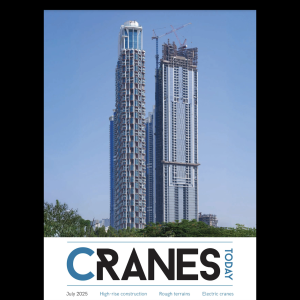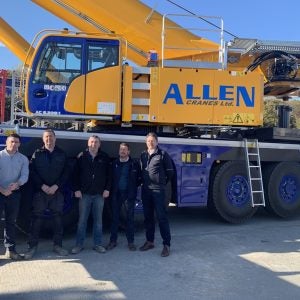The J5510 is the fourth in a series of cranes with 1t capacity at the jib end. Launched in earlys 2000, with the 40m jib J4010, the series includes the J4510, J5010, and the new J5510. The model numbers refer to the jib length (first two digits) and 1t jib-end capacity (last two digits).
Mikel Iturrioz, export area manager, explains, “Customers are looking for longer jibs, but aren’t so worried about capacity. We were going to finish the series with the J5010, but there was demand for a crane with a slightly longer jib.” The maximum capacity of the cranes in 2.5t; according to Iturrioz, about the same weight as a cubic metre of concrete.
Also new was the J300.2R. The redesigned crane is aimed at customers working on particularly tall buildings. Traditionally, one of the limiting factors when lifting heavy loads on the highest buildings isn’t the free-standing ability of the crane, but the size of drum needed. For example, to lift a 12t load, cranes are often designed with four ropes. On a 150m high building, this will mean that the crane will need to be able to spool 600m of rope on to its drum (for four cables, each of which needs to be 150m long).
With the J300.2R, Jaso has designed a crane that can achieve the same 12t capacity as a double roped crane, but with a single rope (with two cables, hence the 2R designation), meaning that the 2R cranes can be erected at double the height of traditional cranes with the same drum capacity. Also, in these new cranes, the maximum hook-lowering speed is much higher than on traditional tower cranes.






